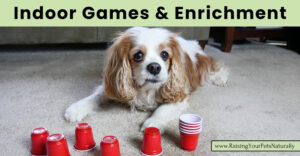Google Adsense—>

How Long Should You Walk a Puppy?
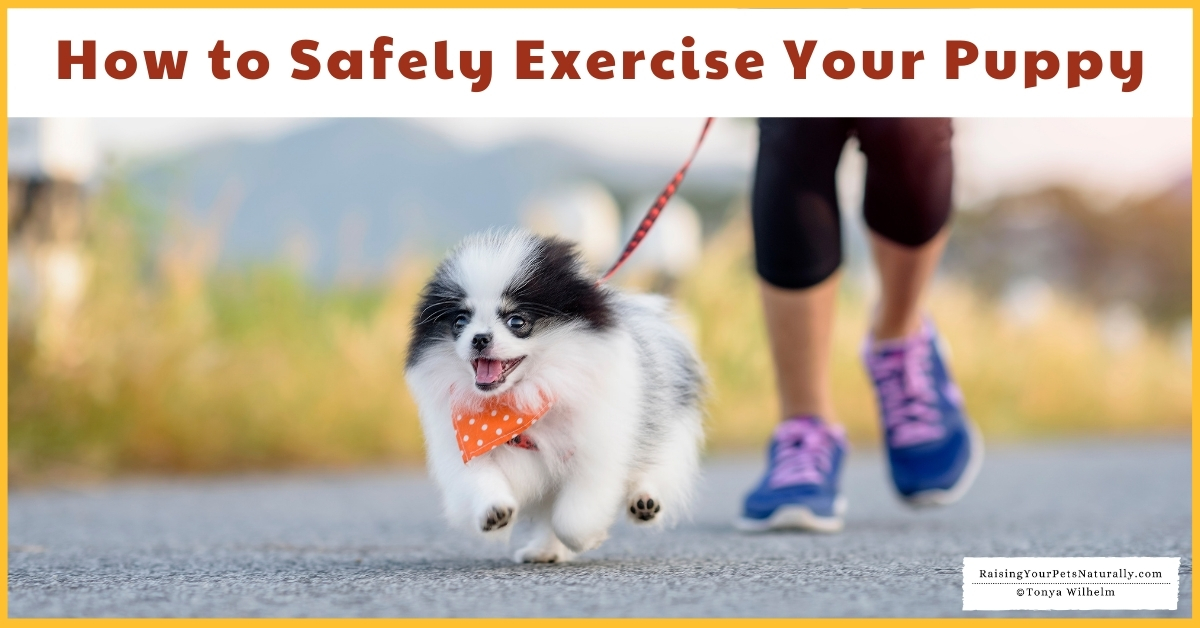
Puppies! Oh, how I love the sweet smell of puppy breath. A behaviorally and physically healthy puppy is so full of life and zest. He may seem like he’s a ball of energy up for the longest walks and big play sessions. He may even be wearing you out with his puppy chewing, jumping, peeing, and zooming. You may be asking yourself how to tire out a puppy. But, before you snap on his puppy leash and head out for a long walk, let’s talk about how much exercise a puppy can safely endure.
As a positive dog trainer with a focus on puppy development, I’ve always heard the rule of thumb, five minutes of exercise per month of age, two times a day. In other words, if you have a four-month-old puppy, 4 x 5 minutes =20 minutes of exercise twice a day. If this doesn’t seem like enough to tire out your puppy, don’t worry, I’ll give you some puppy tips at the end.
Online puppy training coming soon! Sign up to be notified.
How Much Exercise Should a Puppy Get
I spoke with a few of the top veterinarians for their best tips on how long and how to safely exercise a puppy.
You may often hear me say, “I need to slow down the Monkey.” I refer to Dexter as my Silly Monkey, and he tries to do things way too fast, which can cause injury to his old-man body. Slow and steady is also the way to go with puppies. Dr. Karen J. Riley from ihavedogs.com also advises keeping a puppy’s exercise slow and calm. She explains why this is so important for puppies.
“Because puppies that are grown for maturity (usually at 18-24 months of age) can be permanently disabled from excessive exercise, while exercise is a great way to prevent problems like diabetes and obesity, overexercising at the wrong age can lead to hip dysplasia, movement disorders, and increased risk of fractures. So pay attention to slow and calm when giving exercise to puppies.”
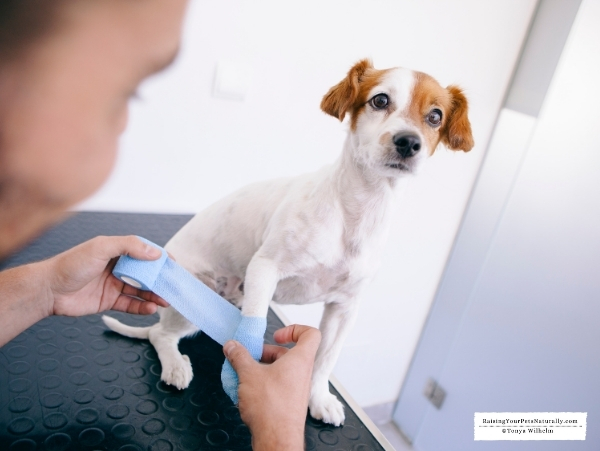
Dr. Georgina Ushi Phillips, from Not A Bully, explains the importance of allowing a puppy’s growth plates to form before too much exercise and why. “Puppies have growth plates, which are primarily made of cartilage, at the end of long bones that need time to solidify. Eventually, these growth plates will close and become dense bones, but this takes time. While it varies by breed, this process is usually complete by the time a puppy is around 18 months.”
Dr. Phillips continues by suggesting, “Too much exercise during this time can cause lifelong problems for puppies as injury can lead to uneven or abnormal growth. As a general rule, limit forced exercise for puppies under 18 months. Forced exercise means things like running or long hikes without an option to stop. That doesn’t mean puppies can’t exercise for longer than that, but they should be able to take breaks.”
When taking your puppy for his walk, you should be very aware of his energy and emotional level. Dr. Brian Bourquin, Chief Medical Officer and Founder of Boston Veterinary Clinic provides these pointers. “You should never be dragging your puppy behind you, running at a fast speed, hiking, or participating in anything that could be considered an intense form of exercise. Activities should be at the puppy’s pace, and, to a certain extent, on his terms. Another thing to keep in mind when exercising a puppy is to be cognizant of the environment they are in. Temperatures during certain times of day, surfaces that you will be walking and running on, all should be taken into account when you are exercising with your puppy.”
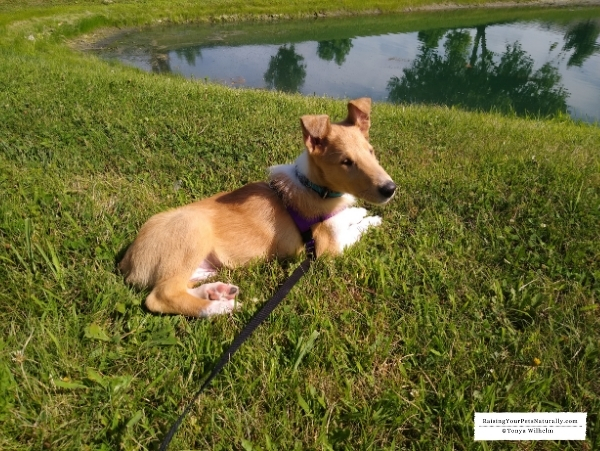
Lisa Davila BS-Biomedical Science Hospital Manager at Aggieland Animal Health Center in College Station Texas, also agrees to keep surfaces in mind when walking and exercising a puppy. She suggests, “ Avoid excessive jumping and long walks on hard surfaces like pavement. Exercise preferentially on natural surfaces as much as possible until the puppy has completed skeletal growth.” I’ve written before about the dangers of jumping off of furniture for all dogs. If you haven’t read that article, take a peek.
How to Safely Tire Out a Puppy
So, what’s a puppy parent supposed to do to tire out their new puppy? As you can imagine, the first thing is to make sure you are taking the advice of the experts, going slow and keeping your puppy’s physical exercise to a minimum. If your puppy ever seems like he’s putting on the brakes, doesn’t want to play or walk, or is exhausted, it may be too much for your puppy. Always go with your gut, and always listen when your puppy is saying he doesn’t want to participate. Speaking with your puppy’s veterinarian is never a bad idea.
Here are some ideas on how to safely keep your puppy exercised and engaged. Remember, short and sweet and low-key.
- Positive puppy training. There is no time like the present to start training your puppy. Puppy training and thinking is a great way to safely tire out your puppy. The sky is the limit on what you can teach your new puppy, as long as you are thinking about his body and not teaching jolting moves or jumps. A few ideas include: sit, down, stay, watch, foot target, nose target, bow, leave it, and shake. Watch these videos to learn how.
- Puppy games and enrichment games. That mind is a terrible thing to waste. Think outside of the box when interacting with your puppy. A few ideas include: find the treat, find the mommy, egg carton game, 101 things to do with a box, walk on it, step on it, walk over it. Check out these enrichment ideas and games.
- Dump the dog food bowl. Instead of feeding your puppy out of his dog bowl, use his food for training treats, find-it treats, or stuffing various food toys with it. You can even take his food and toss it into the grass for hunting. If your puppy is on a raw-food diet (Yay!) or fresh eating, you can still use his food in food-type toys. For training, you can cut back on his food and use cooked, dehydrated, or freeze-dried meat for training treats or find it treats.
- Sniffy-sniff. Let them sniff. Truly. When you are in your fenced-in yard with your puppy, allow him to sniff and investigate his world. The same goes for when he’s leashed on his walk or you take him to the park. Let him set the pace and direction. Encourage him to investigate, walk on it, step over it, smell it.
- Watch the world go by. Sit outside with your puppy, watch your neighbors, the butterflies and leaves fly around. Reward him for good behavior, tell him how cute he is and how much you adore his little nose. This is a great way to properly socialize your puppy and to build confidence and trust in you.
If you are actively engaging your puppy in short walks, training sessions, enrichment games, sniffy walks, watching the world go by, he will be living a full life. He will be properly exercised both physically and mentally. He, of course, will still be a puppy and have a quick puppy zoomie, but he will be much more relaxed and content. Now, go grab his leash and go for a sniffy walk.
Don’t forget to subscribe.
Your questions or comments are welcome below.
Are you looking for even more ways to stay up to date with Raising Your Pets Naturally? Sign up for the newsletter for more tips and promotions. Don’t forget to be social and Like, Follow and Subscribe. Comments below are always welcome.
Facebook Twitter Pinterest Instagram YouTube
 |
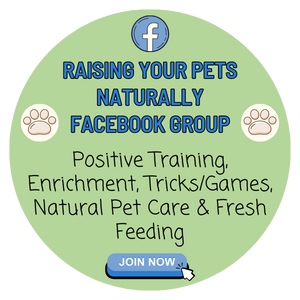 |





